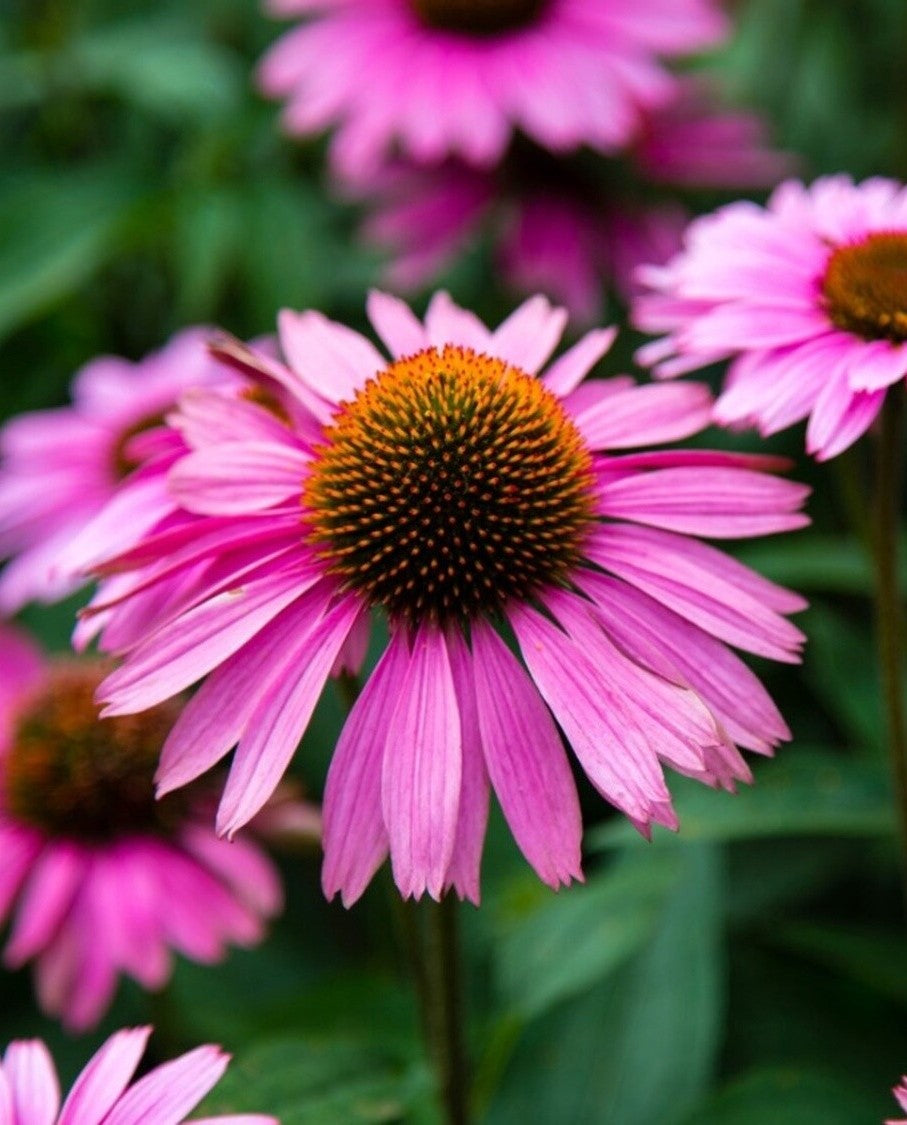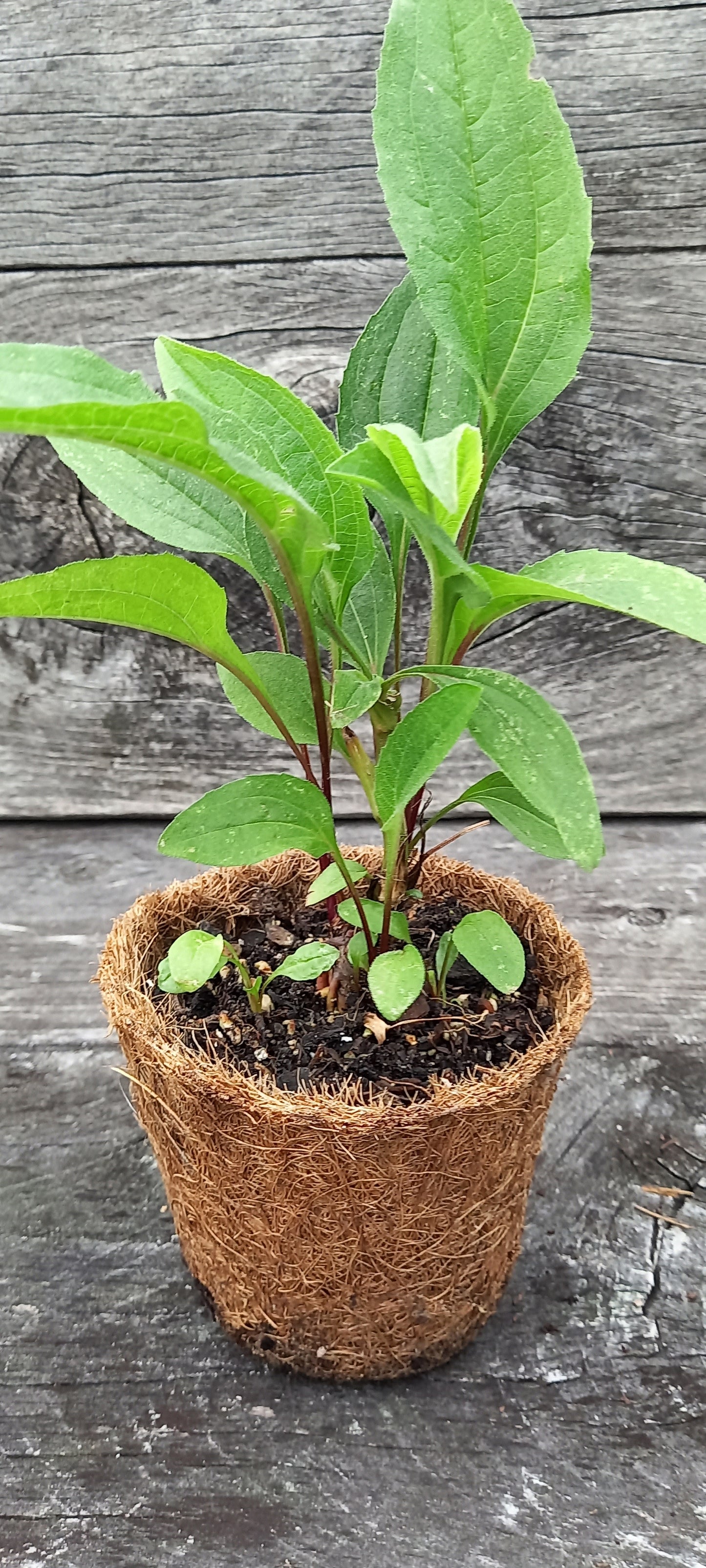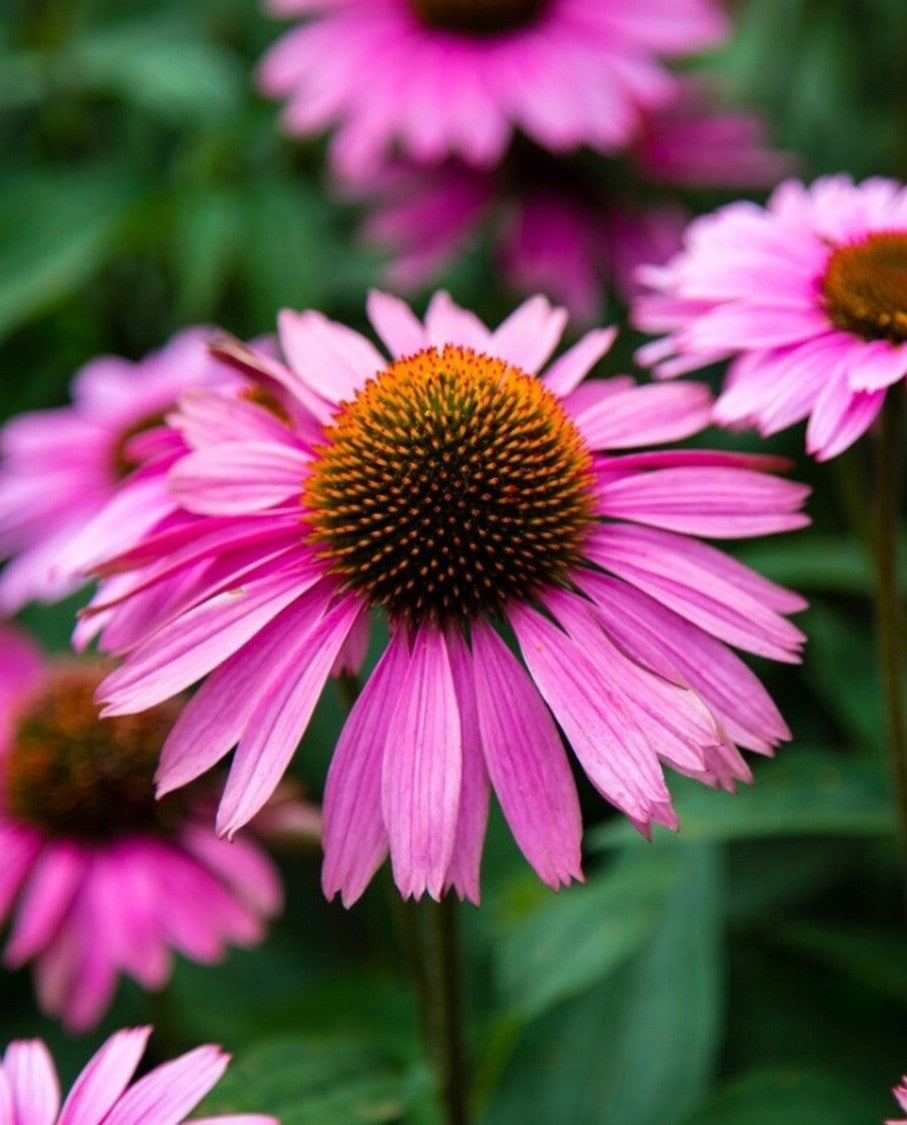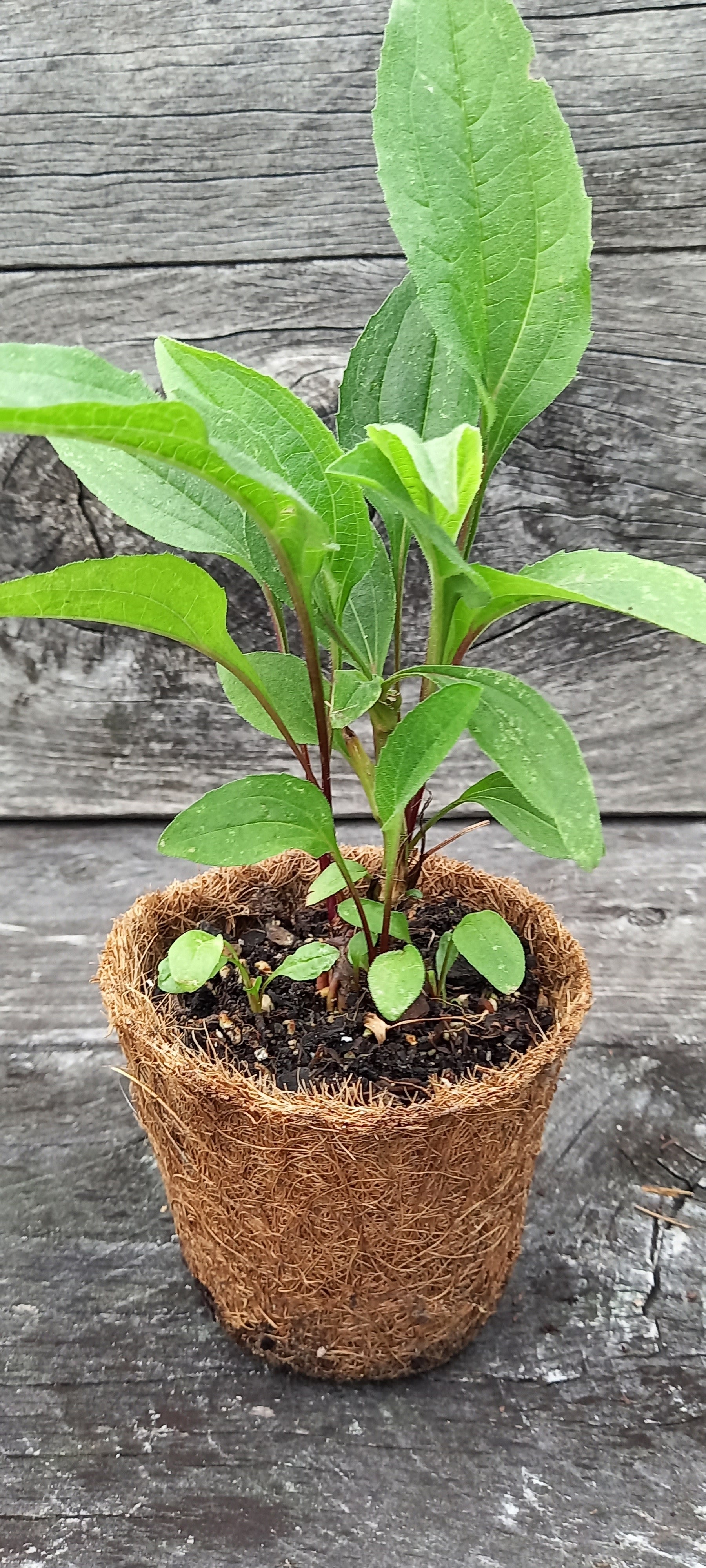The Herb Garden
Echinacea
Echinacea
Couldn't load pickup availability
Botanical name: Echinacea purpurea
Life cycle: Perennial
Height: 60-100 cm
Position: Full sun
Soil preference: Well drained
Description
Echinacea, also known as purple coneflower, is a herbaceous perennial growing to around 1 m tall. It has dark green lanceolate leaves, the lower ones with serrated margins. In summer and autumn large daisy like flowers grow on strong stems with numerous mauve to red ray florettes surrounding the prickly, cone-shaped centres. The roots grow in a spreading, multi-branched root mass.
The flowers are very attractive to bees.
Uses
Medicinal – Echinacea is native to North America where it has long been used medicinally in the treatment of infections of all kinds. Constituents found in echinacea, such as polysaccharides, isobutylamides and caffeic acids, have been shown to support the body’s immune response, reducing inflammation, increasing white blood cells, and aiding in the destruction and removal of unwanted bacteria, fungus, and viruses. It also helps boost the immune system after prolonged illness in conditions such as post-viral fatigue, shortening the convalescent period.
The roots and leaves are antibiotic and are believed to strengthen the body’s defences, particularly the immune system, meaning it can be used to support the body in both bacterial and viral infections. Echinacea is often taken during winter to ward off infections like colds and flu and is also used against chronic infections and post-viral fatigue. A decoction of the root or an infusion of the leaves is the usual preparation.
Used internally and topically, echinacea helps to clear skin wounds, acne, and infections such as ringworm, impetigo, and thrush. Make a paste from the root powder mixed with water or use the diluted tincture on some clean gauze or cotton to bathe the affected area.
Caution - Echinacea may interact with immunosuppressant drugs. Seek professional advice when using in autoimmune conditions. Do not use in known sensitivity to the daisy (Asteraceae) family.
Harvesting - For medicinal use, the leaf and flower should be collected when the plant is in full bloom before the flowers begin to fade. Roots of established plants (3-4 years old) can be dug up in autumn when the aerial parts have died back. The roots should be washed and chopped and made into a tincture.
Growing conditions
Echinacea thrives in full to partial sun. In their native habitat plants can be found along the edges of woodlands, so they will thrive in spots with morning shade and afternoon sun or vice versa. Echinacea prefers a well-drained soil and is fairly drought tolerant.
9cm pot.
Organically grown plant in a biodegradable coir pot.
Share




